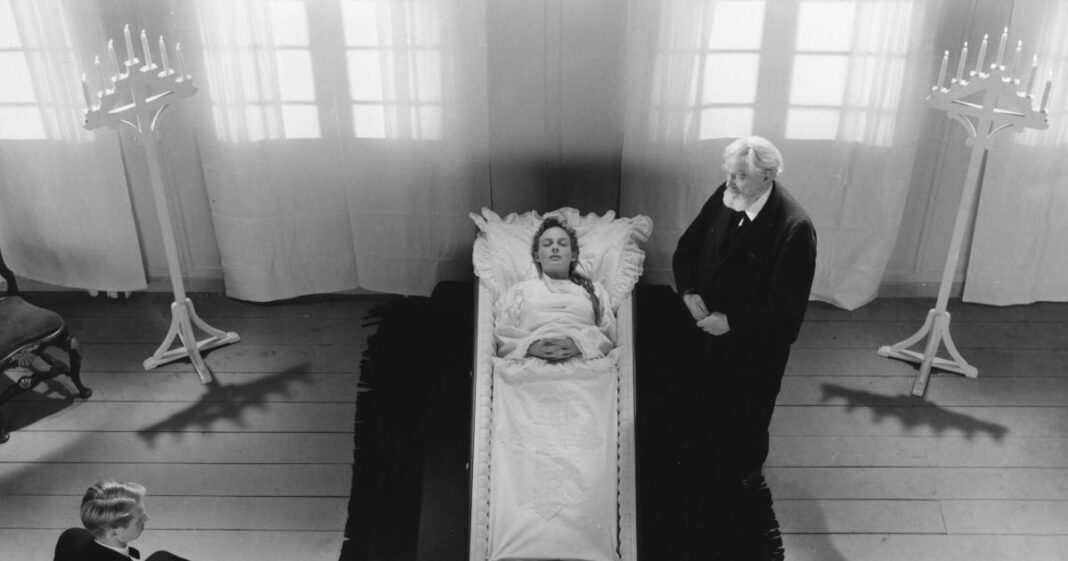Ordet (1955) Review: Exploring the Spiritual Essence of Humanity
In the world of cinema, there are films that transcend mere storytelling, delving deep into the essence of human existence and spirituality. One such masterpiece is Carl Theodor Dreyer’s "Ordet," a film that challenges the conventional notions of religious faith and spirituality. Premiered 70 years ago, this timeless classic continues to captivate audiences with its profound exploration of individual spirituality and the complexities of human relationships.
The Story So Far: A Glimpse into the World of "Ordet"
Set in the tranquil surroundings of Borgensgaard, "Ordet" follows the lives of the Borgen family – a tale of love, faith, and redemption. At the heart of the narrative are the two Christian factions, the Glad Christians, and the followers of the Inner Mission, whose rivalry mirrors the broader themes of the film. As the story unfolds, we are introduced to the patriarch Morten Borgen and his sons, each grappling with their own beliefs and desires. The film weaves a delicate tapestry of emotions, questioning the very essence of faith and the human experience.
Unveiling the Layers of "Ordet": A Cinematic Masterpiece
Dreyer’s meticulous attention to detail and his unique storytelling style shine through in "Ordet." Through a series of nuanced characters and intricate relationships, the film delves deep into the complexities of faith, love, and the human condition. The stark contrast between the two Christian factions serves as a backdrop for a more profound exploration of individual spirituality and the search for meaning in a world plagued by doubt and uncertainty.
The Performances: A Symphony of Emotions
The performances in "Ordet" are nothing short of mesmerizing. From the stoic portrayal of Morten Borgen to the haunting madness of Johannes, each character is brought to life with raw emotion and depth. The actors breathe life into Dreyer’s vision, drawing the audience into a world where faith and doubt collide, and love conquers all.
Direction and Cinematography: A Visual Feast
Dreyer’s masterful direction and the stunning cinematography of "Ordet" elevate the film to a realm of visual poetry. Every frame is a work of art, meticulously crafted to convey the emotional depth of the characters and the underlying themes of the narrative. The haunting beauty of the Danish landscape serves as a metaphor for the inner struggles of the characters, creating a visual spectacle that lingers long after the credits roll.
Conclusion: A Cinematic Triumph
In conclusion, "Ordet" stands as a testament to the power of cinema to transcend boundaries and touch the very soul of the viewer. Through its profound exploration of faith, love, and the human spirit, Dreyer invites us to ponder the deeper mysteries of existence and the interconnectedness of all things. "Ordet" is not merely a film; it is a profound meditation on life, death, and everything in between.
Frequently Asked Questions
1. What is the central theme of "Ordet"?
"Ordet" explores themes of faith, love, and the complexities of human relationships, challenging traditional notions of religious belief.
2. How does Dreyer’s directing style contribute to the film’s impact?
Dreyer’s meticulous attention to detail and his focus on inner emotions create a profound cinematic experience that resonates with audiences.
3. What makes the performances in "Ordet" stand out?
The performances in "Ordet" are characterized by raw emotion and depth, with each actor bringing a unique perspective to their role.
4. How does the cinematography enhance the storytelling in "Ordet"?
The stunning cinematography of "Ordet" captures the emotional depth of the characters and the underlying themes of the narrative, creating a visual masterpiece.
5. What is the significance of the rivalry between the two Christian factions in the film?
The rivalry between the Glad Christians and the Inner Mission serves as a backdrop for a deeper exploration of faith, doubt, and the human experience.
6. How does "Ordet" challenge conventional notions of spirituality?
"Ordet" challenges conventional notions of spirituality by delving into the complexities of individual faith and the search for meaning in a world filled with uncertainty.
7. What sets "Ordet" apart from other films of its time?
"Ordet" stands out for its profound exploration of human spirituality, its nuanced characters, and its visually captivating storytelling.
8. How does "Ordet" resonate with audiences today?
"Ordet" continues to captivate audiences with its timeless themes of faith, love, and the human condition, offering a poignant reflection on the nature of existence.
9. What makes "Ordet" a cinematic masterpiece?
"Ordet" is a cinematic masterpiece due to its profound storytelling, exceptional performances, masterful direction, and stunning cinematography.
10. How does "Ordet" leave a lasting impact on viewers?
"Ordet" leaves a lasting impact on viewers by inviting them to reflect on the deeper mysteries of life, death, love, and the interconnectedness of all things.
Tags: Ordet, Carl Theodor Dreyer, Danish Cinema, Spiritual Cinema, Human Spirituality

